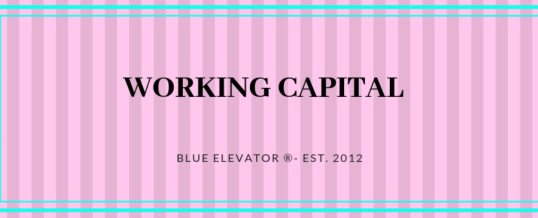
Working Capital
How do you measure your organization’s Working Capital?
What is It?
What comes to mind when you hear the term Working Capital?
If you’re like most people, you probably think of cash on hand. But, it’s more than just that.
The technical definition is Current Assets minus Current Liabilities.
The Balance Sheet
You will find the elements you need on your organization’s Balance Sheet.
First, Current Assets includes cash. Additionally, it also includes other assets that will be converted to cash or used up in the next 12 months.
- Your typical Current Assets would include accounts as follows: Cash, Accounts Receivable, Prepaid Insurance, Prepaid Expenses, etc.
Next, Current Liabilities are defined as liabilities (or debts) that will be due within the next 12 months.
- Your typical Current Liabilities would include accounts such as Accounts Payable, Accrued Expenses, etc.
- You should also include the next 12 months’ debt service for all short-term and long-term loans.
Additionally, if your normal operating cycle is greater than 12 months, the longer period is acceptable.
Calculate It!
Now, calculate your organization’s Working Capital using the formula above.
First, add up all of your Current Assets. Then, add up all of your Current Liabilities.
Next, subtract Current Liabilities from Current Assets.
What Did You Find?
Did you calculate a positive number? If so, your Current Assets exceed your Current Liabilities.
Is it a negative number? If so, your Current Liabilities exceed your Current Assets.
Obviously, you want to work towards having a positive balance.
Understanding Working Capital
What does this mean?
If you have a positive number, this means that (theoretically) you have enough Current Assets to satisfy all of your Current Liabilities for the next 12 months.
- If you have $0.00 Working Capital, this isn’t a bad thing, per se. It means that you have enough Current Assets to cover Current Liabilities.
- If you have a positive number, you are doing well.
- If you have a negative number, it means something is awry and needs attention.
Measure and Monitor
Now you know how to calculate Working Capital. Be encouraged to calculate it each month.
Additionally, you can also set incremental goals for improvement.
Contact us if you have any questions or comments!
JUL

About the Author:
Ken Moll is the Principal and Founder of Blue Elevator®. With professional experience spanning four decades, Ken has a breadth of foundational business knowledge rarely found – making him part of an elite class of professionals. Ken's passion is helping clients of Blue Elevator® get their “business to the next level™.”